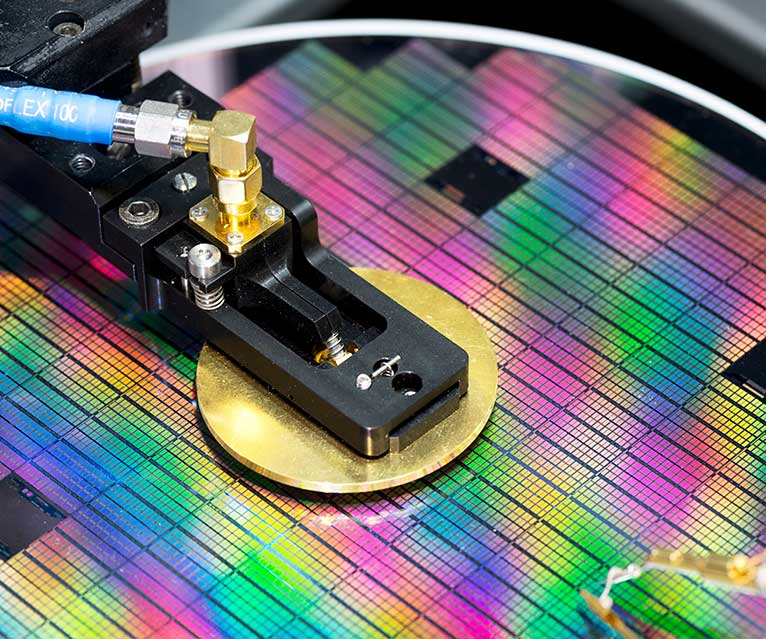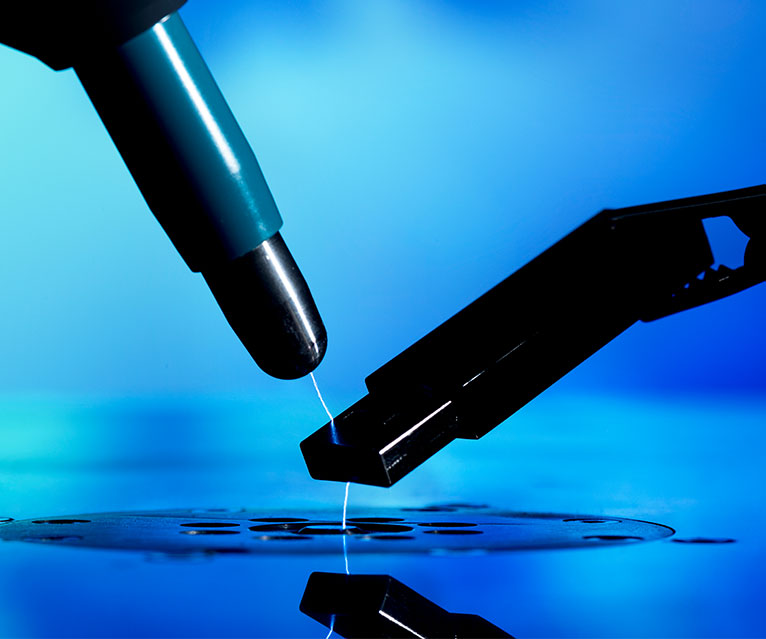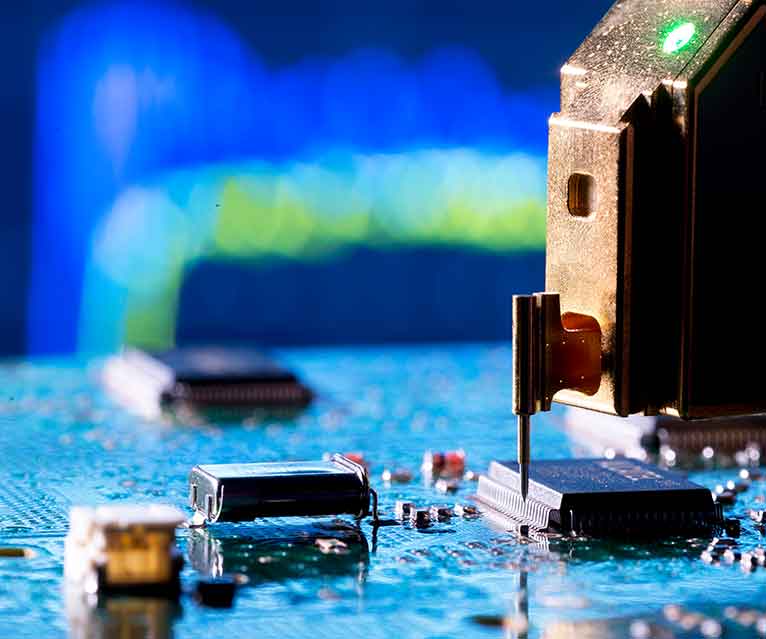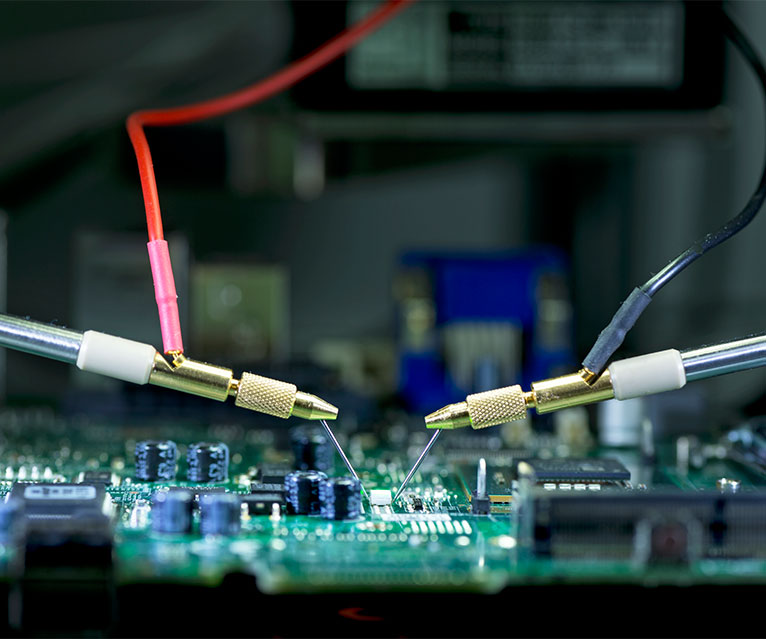Fraunhofer EMFT has been a leader in the research and application of electrostatic discharges (ESD) in microelectronics for 30 years. Our expertise includes the efficient solution of acute problems, the qualification of components with special requirements and the development of reliable ESD protection concepts for electronic circuits and systems. As a member of the German ESD-FORUM e.V. and the ESD Association's ESD test standardization committees, we are internationally recognized. In our laboratory, we use both standardized and newly developed methods and systems for ESD testing and develop customized test methods and setups for our customers. Our experienced team and our first-class measurement equipment enable us to develop even unusual test solutions.
ESD - Electrostatic Discharge

We often encounter electrostatic discharges in everyday life more often than we would like - sometimes all it takes is touching a door handle to feel the unpleasant discharges. Compared to electronic systems and technologies, however, humans are very insensitive to electrostatic discharge, as even a low voltage can quickly lead to damage, especially with high-speed technologies. This problem is exacerbated by the ongoing trend towards miniaturization in microelectronics, which also leads to a reduction in the maximum permissible discharge voltage. Adequate ESD protection is therefore essential, especially in automated production environments. Individual components are tested for their ESD resistance using standardized load models. However, conventional test methods are already reaching their limits in terms of accuracy and reproducibility, meaning that more precise measurement methods are required.
Characterization of ESD protective structures
On behalf of various industrial customers, researchers at Fraunhofer EMFT characterize ESD protection structures in the ESD-relevant high-current range and with a transient resolution of a few tens of picoseconds. Based on the analysis results, the experts develop high-performance protection concepts for different applications and requirements.
A modern, fully equipped HPPI3011C TLP system in conjunction with a 300 mm Cascade PA300 or the HPPI ATS_8000A Flying Probe System in conjunction with broadband oscilloscopes (>33 GHz) from Keysight are used for the work.
ESD/ EOS-induced failure scenarios are reproducibly simulated for industrial partners from the automotive and LED lighting sectors, among others, and loads are measured down to the picosecond.
At the system level, the experts at Fraunhofer EMFT specialize in detecting design-induced disturbances and developing appropriate protection concepts.
CC-TLP as new standard for ESD testing
With so-called Capacitively Coupled Transmission Line Pulsing (CC-TLP), the researchers have developed and patented a new type of measurement technology that offers significantly higher accuracy and reproducibility in component testing than the commonly used CDM (Charged Device Model) test. This is particularly important for modern technologies with low ESD tolerance. The ability to test circuits directly on a wafer is also particularly useful, allowing weaknesses in ESD protection to be detected at an early stage.
In October 2022, CC-TLP was published as a standardized procedure for ESD tests under ANSI/ESD SP5.3.4-2022.

Service Offering for ESD Qualification and Testing
- ESD Human Body Model (HBM) test according to ANSI/ESDA/JEDEC JS-001-2023 at wafer/die/package level (2-pin HBM tester)
- ESD Charged Device Model (CDM) test according to ANSI/ESDA/JEDEC JS-002-2022
- ESD high current characterization with Transmission Line Pulsing (TLP) on wafer/die/package level with impulse lengths of sub ns to µs domain at various rise times (ANSI/ESD STM5.5.1-2016).
- Capacitively Coupled TLP (CC-TLP) for evaluating CDM stability with significantly higher precision and reproducibility (ESDA Standard Practice Document published as ANSI/ESD SP5.3.4-2022)
- Human Metal Model (HMM) measurements according to ESD SP5.6-2019
- System-level ESD analyses derived from IEC 61000-2-4
- Loading of circuits in standard enclosures, but also of special enclosures up to bare dies



Electromagnetic Compatibility (EMC) Analysis and Measurements
- Scanner measurements of the radiation of products at board level
- Measurement of the sensitivity of systems to interference (conducted or non-conducted)

